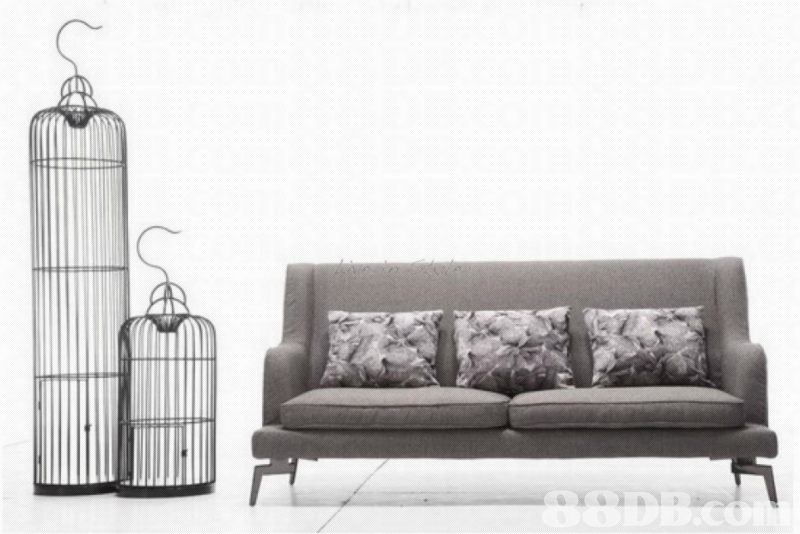Title: Reviving an Old Sofa: A Comprehensive Guide to Refurbishing Your Furniture
Reviving an Old Sofa: A Comprehensive Guide to Refurbishing Your FurnitureRefurbishing an old sofa can be a fun and rewarding project, not to mention it is a great way to breathe new life into your furniture without breaking the bank. The first step in reviving your sofa is to determine its condition. This will help you decide on what repairs are necessary and which materials to use. Once you have assessed your sofa's condition, you can begin the refurbishing process. This involves cleaning the sofa thoroughly, replacing any worn out or damaged parts, and applying new fabric or upholstery. You can also add decorative elements such as pillows, throws, and rugs to give your sofa a fresh new look. It is important to note that refurbishing your sofa requires patience and attention to detail. By taking the time to properly care for and repair your furniture, you can extend its lifespan and keep it looking like new for years to come.
As furniture enthusiasts, we all have that one old piece that we adore for its unique charm and sentimental value. However, as time passes, these beloved items may start to show signs of wear and tear, leaving us feeling disappointed and wanting to renovate them. Don't worry; with a bit of creativity and effort, you can breathe new life into your old sofa and make it look like new! In this comprehensive guide, we will explore the steps involved in refurbishing an old sofa, from selecting the right materials to applying finishing touches. So let's get started!

Step 1: Declutter and Clean
Before diving into the renovation process, it's important to remove any loose items, such as cushions, throws, and blankets, and store them in a separate location. This will give you a clearer workspace and make it easier to assess the state of your sofa. Next, vacuum the surface thoroughly to remove any dust and debris. If there are any stains or spills that need attention, use a mild detergent and warm water to clean them up. Once everything is clean and dry, move on to the next step.
Step 2: Repair Damages
Inspect your sofa carefully for any damages, such as tears, holes, or burns. If you find any issues that need fixing, start by removing any loose threads or fabric scraps. Then, cut a patch of cloth that is slightly larger than the damaged area and sew it onto the affected area using a strong thread. If you're not confident in your sewing skills, consider taking your sofa to a professional repair service. Once all damages are repaired, allow the fabric to dry completely before moving on to the next step.
Step 3: Replace Fabric or Leather

If your old sofa is made of fabric or leather, it may be time to consider replacing the entire cover. To do this, measure your sofa carefully to ensure that you select a replacement piece that fits properly. When selecting fabric, consider factors such as durability, color, and pattern. For leather, opt for high-quality leather that is easy to care for and looks great in both casual and formal settings. Once you've selected your replacement fabric or leather, purchase it online or at a local retailer and follow the instructions provided for attaching it to your sofa. Make sure to use strong adhesives and double-check that everything is securely in place before proceeding to the next step.
Step 4: Apply Stain Resistance Treatment
To prevent future stains on your newly renovated sofa, apply a stain resistance treatment to the surface of the fabric or leather. There are many products available on the market that offer long-lasting protection against coffee, tea, wine, and other types of liquids. Simply apply the treatment according to the manufacturer's instructions and allow it to dry completely before using the sofa again. If you opted for a natural fabric like cotton or linen, you can also add a layer of polyurethane spray to protect against water damage and fading.
Step 5: Add New Cushions
One of the easiest ways to update your old sofa while keeping costs low is to replace the existing cushions with fresh ones. Choose cushions that complement the style of your sofa and offer comfort and support. If you're not sure about how to replace the cushions on your particular sofa model, consult a professional furniture repair service or search for online tutorials specific to your make and model. Alternatively, you can create custom cushions by ordering covers from a fabric store and adding foam padding for extra comfort and support.

Step 6: Experiment with Accessories
Accessorizing your refurbished sofa is a fun way to add personality and style to your living space. Consider adding throw pillows in coordinating colors or patterns, a soft rug underfoot for added warmth and comfort, or even a few decorative objects such as vases or artwork. Be creative and have fun with your accessories! Just make sure they don't overpower your sofa or clash with its existing decor.
Step 7: Final Touches
Once you've completed all of the above steps, take a step back and admire your hard work! Make any final adjustments to the placement of cushions or accessories as needed and give your sofa a good vacuuming or steam cleaning to remove any remaining dust or debris. Finally, relax on your rejuvenated sofa and enjoy the satisfaction of knowing that you transformed an old piece into something new and beautiful!
Articles related to the knowledge points of this article:
The benefits of wearing a down jacket
Feather and Down Recycling: A Sustainable Solution for the Fashion Industry
Title: Special Offer on Down Jackets
Title: How to Stylishly Wrap a Silk Scarf for an Effortless Look



